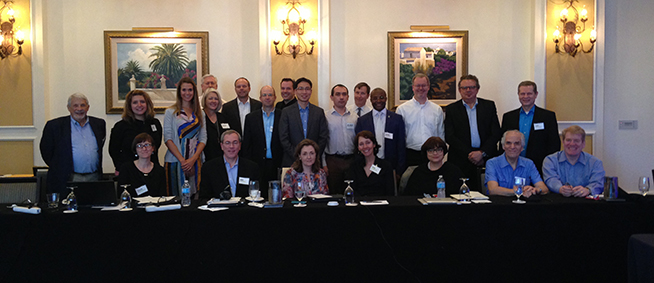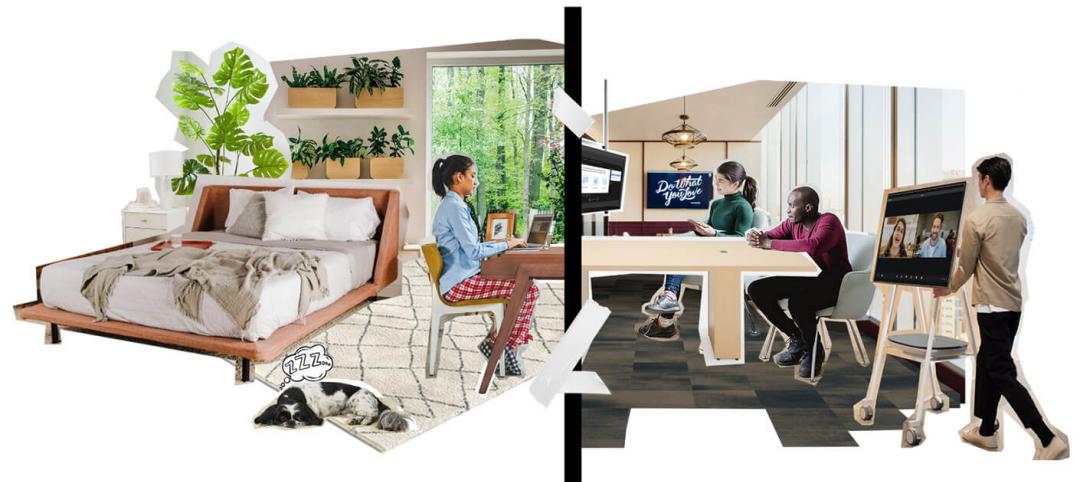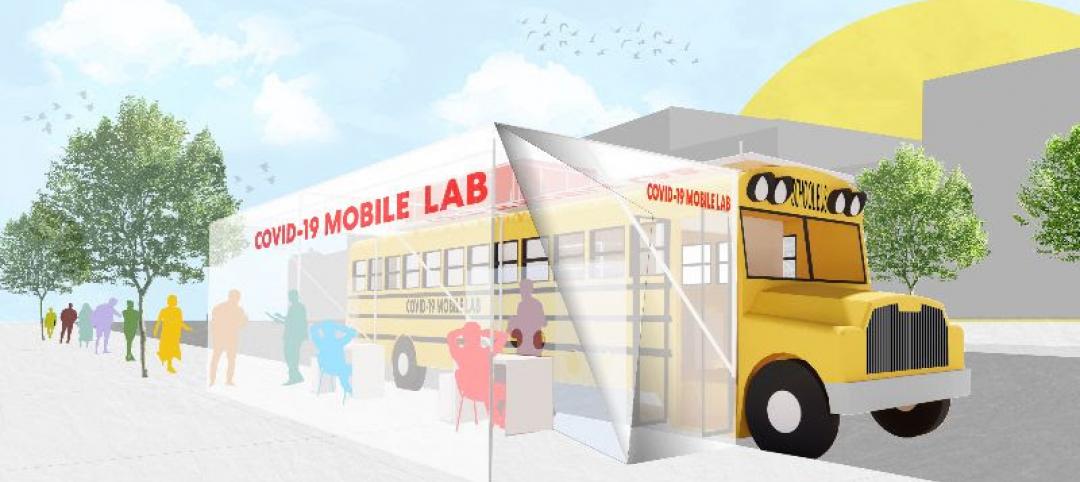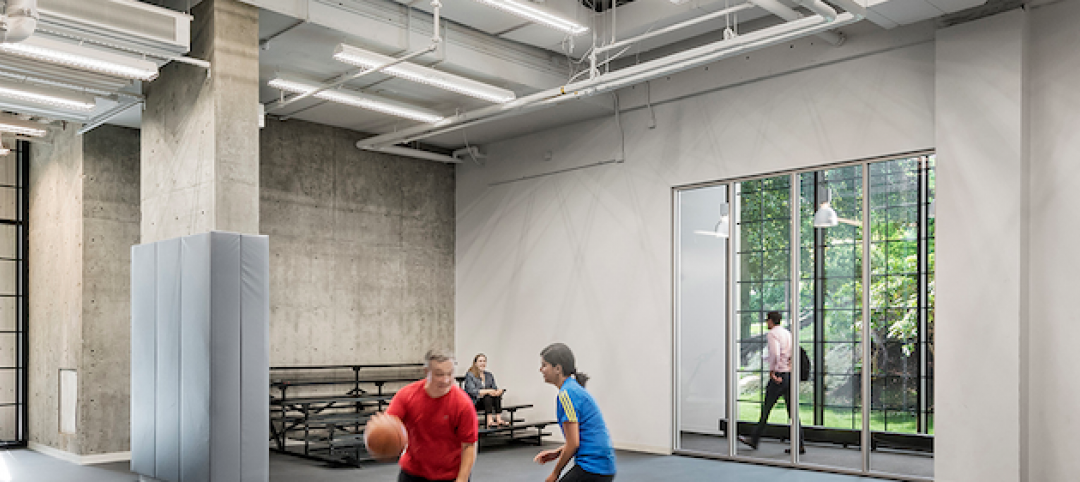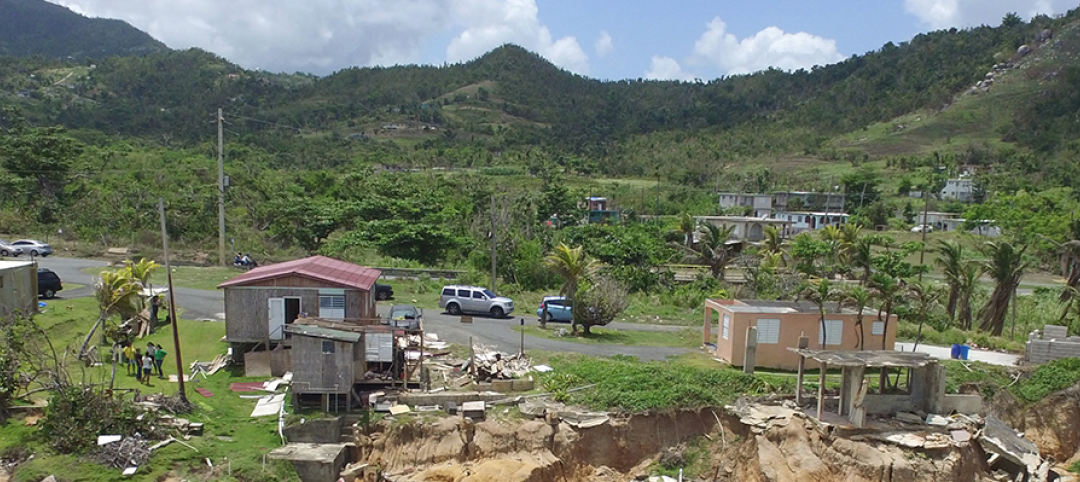Things are changing in healthcare. Within academic medicine alone, there is a global shortage of healthcare professionals, a changing policy landscape within the United States, and new view and techniques in both pedagogy and practice.
In a recent symposium hosted by Perkins+Will, experts in health sciences and education, led by global practice leader Dan Watch, gathered for a deep dive into the evolving world of medical education and allied health/science fields.
The group, an interdisciplinary mash-up of physicians, nurses, educators, and designers from the U.S. and Europe, discussed the “once and future” state of academic medicine. The two-day meeting—part exploratory conversation, part passionate call to action—delved into what it will take to properly educate and equip the next generation of health/science professionals in a rapidly changing environment of care and what the implications are for space, resources and sustainable solutions.
Five big ideas arose out of the robust and productive conversation.
1. Global demand for health professionals will rise three-fold. The global demand for medicine and allied health professions is exploding in certain parts of the world. It is expected that as the world’s population increases there will be a demand for over three times the number of medical schools around the globe. What does this mean to our ability to research, care, and enable practice through smart, sustainable facilities and enabling technology?
2. Learning is not listening; learning is doing. The means and methods of medical education that have been in place since the Industrial Revolution are now being called deeply into question—and in many cases supplemented or replaced entirely with active learning and simulation methodologies. More emphasis is placed on competency-based measurement and more individualized learning models. Shining a light on outcomes will likely accelerate more transparent and adaptable teaching methods.
3. Education in the age of accountable care. Shifts in healthcare policy are placing enormous pressure on the care infrastructure. A system more focused on preserving wellness and treatment in outpatient and even virtual settings means that, on the continuum of a care, patients families will ultimately have more responsibility and require more knowledge and training to help their loved-ones.
4. Team-based everything. The model of the physician as the autocratic decisionmaker and care provider is now in many cases seen as a vestige of the past. Moving forward, teams of doctors, nurses, physician’s assistants, nutritionists, therapists, social workers, and pharmacists will work in teams to provide consultative team-based care. Health science education has already responded to this by creating curricula that is increasingly more team-based and interdisciplinary and interprofessional. Schools of public health, as well as business and management curricula, will influence the future health science professionals in education and in practice.
5. If: health is the aim ? Then: healthy materials + buildings. As we redefine healthcare to deliver wellness, attention must be paid the creation of sustainable, resilient buildings and the elimination of materials known to be harmful and removing them permanently from the building cycle. A powerful cross disciplinary effort that includes physicists, materials scientists—along with healthcare and design professions—can create this sweeping change.
The confluence of change in the U.S. healthcare system, along with deep concerns related to global health crises and increased awareness of the danger of climate change, create a health science/medical education landscape that is transforming before our eyes. Specialists at Perkins+Will continue to focus and innovate along with far-sighted clients in this volatile and interdisciplinary field of practice.
About the Author
Pat Bosch, Design Director of Perkins+Will’s Miami office, is internationally recognized for her design work. Born in Cuba and having lived in Spain, Puerto Rico, New York, Zurich and now Miami, Pat brings a global perspective to her practice. She is LEED accredited and has nearly 27 years of experience specializing in Higher Education, K-12 Schools, Science + Technology, Corporate Headquarters, and Civic buildings such as libraries and museums.
Read more posts on the Perkins+Will ideas+buildings blog
More from Author
Perkins and Will | Sep 19, 2023
Transforming shopping malls into 21st century neighborhoods
As we reimagine the antiquated shopping mall, Marc Asnis, AICP, Associate, Perkins&Will, details four first steps to consider.
Perkins and Will | Jul 20, 2023
The co-worker as the new office amenity
Incentivizing, rather than mandating the return to the office, is the key to bringing back happy employees that want to work from the office. Spaces that are designed and curated for human-centric experiences will attract employees back into the workplace, and in turn, make office buildings thrive once again. Perkins&Will’s Wyatt Frantom offers a macro to micro view of the office market and the impact of employees on the future of work.
Perkins and Will | May 30, 2023
How design supports a more holistic approach to training
For today’s college athletes, training is no longer about cramming team practices and weight lifting sessions in between classes.
Perkins and Will | Dec 20, 2022
4 triage design innovations for shorter wait times
Perkins and Will shares a nurse's insights on triage design, and how to help emergency departments make the most of their resources.
Perkins and Will | Aug 30, 2021
The great re-shuffle & re-think
In this new hybrid environment in which we cater to how our employees work best, how will we manage new hybrid work practices and etiquette?
Perkins and Will | May 18, 2020
Global design firms collaborate on new COVID-19 mobile testing lab to bring testing to vulnerable communities worldwide
Perkins and Will, Schmidt Hammer Lassen Architects, and Arup Group develop scalable solutions for increased testing capacity within high-density and under-served neighborhoods.
Perkins and Will | Jun 7, 2019
Workplace wellness: Top 3 tips for Fitwel certification
How can thoughtful design encourage healthier choices, lifestyles, and work environments?
Perkins and Will | Feb 27, 2019
ResilientSEE: A framework to achieve resilience across scales
Conceived in the Boston studio of Perkins+Will, the ResilientSEE team developed a resilient planning framework that can be applied to other neighborhoods, cities, and countries.
Perkins and Will | Nov 28, 2018
Amazon HQ2 and the new geography of work
The big HQ2 takeaway is how geography and mobility are becoming major workplace drivers.
Perkins and Will | Sep 4, 2018
It takes more than money to fund resilience
Resilient design, much like all projects in the built environment, requires funding.

